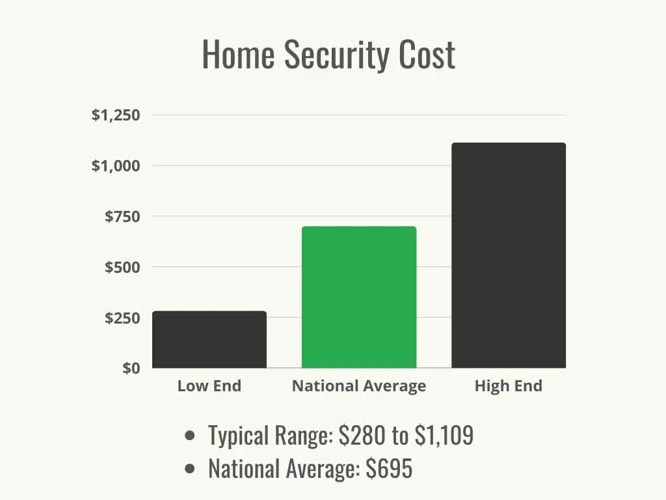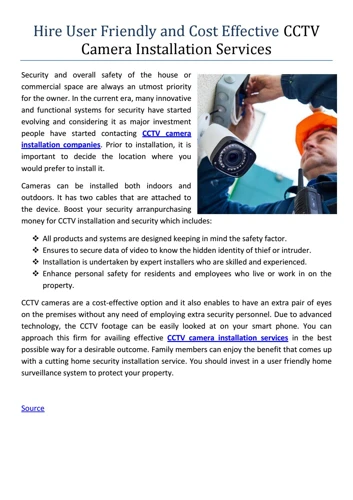In today’s digitally driven world, ensuring the security of our premises has become a paramount concern for both businesses and homeowners alike. With the advent of advanced security and surveillance technologies, the options available for safeguarding assets have significantly broadened. However, the decision between opting for security cameras or video surveillance systems often leads to a complex analysis of costs, not just at the outset but also considering the long-term financial implications.
The hidden costs associated with security and video surveillance systems can have a substantial impact on your budget over time. These may include the initial savings vanishing over the lifetime of the system, substantial ongoing maintenance, upgrade costs, specialized technicians for specific camera systems, and additional investments as needs change. Furthermore, the total cost of ownership (TCO) encompasses everything from the initial installation and ongoing maintenance, making it crucial to understand these aspects before making a decision.
Understanding Security System Costs

Initial Investment in Security Cameras
The upfront cost of security cameras often presents the first hurdle for businesses and homeowners. This initial investment includes not just the physical cameras but also installation fees and the infrastructure needed to support the system, such as wiring and monitors.
Video Surveillance Costs Breakdown
The financial commitment to a video surveillance system extends beyond the initial setup. Subscription fees for cloud storage, costs associated with false alarms, police response fees, and system downtime are all critical factors that contribute to the overall expense of operating a surveillance system.
Uncovering Hidden Expenses in Surveillance

Unexpected Security Costs
Hidden costs can quickly turn a seemingly affordable security system into a financial burden. These include maintenance and repair costs, along with potential increases in cybersecurity measures to protect network-connected systems.
Surveillance System Maintenance Costs
Regular maintenance is vital to ensure the continuous operation of surveillance systems, but it can also be a source of unexpected expenses. Specialized technicians might be required for repairs, adding to the overall cost.
Cost-Benefit Analysis of Security Systems
Security Cameras Investment Benefits
Despite the potential hidden costs, the benefits of investing in security cameras include deterrence of criminal activity, evidence collection, and peace of mind for property owners.
Video Monitoring Financial Impact
The financial impact of video monitoring extends beyond the cost savings from deterrence. It also includes the potential for lower insurance premiums and the avoidance of losses through timely intervention in security incidents.
Total Cost of Ownership for Security Systems
Cost of Surveillance Equipment
Understanding the cost of surveillance equipment requires consideration of not just the purchase price but also installation costs, potential upgrades, and compatibility with existing systems.
Long-Term Security System Costs
The long-term costs of security systems encompass regular maintenance, potential upgrades, and the cost of operating the system, such as electricity and internet bandwidth.
Minimizing Surveillance Costs
Reducing the Cost of Security Over Time
Strategies for reducing the cost of security over time include selecting energy-efficient systems, opting for cloud storage to reduce on-site hardware needs, and choosing scalable systems that can grow with your needs.
Smart Investments in Surveillance Technology
Making smart investments in surveillance technology involves researching and selecting systems that offer a balance of upfront costs and long-term savings. This might include choosing systems with lower maintenance requirements or opting for cloud-based solutions.
When considering the safety of your business or property, the debate between using video surveillance or hiring security guards is pivotal. Each option has its own set of advantages, challenges, and, importantly, costs. For a comprehensive understanding of these security measures, it’s essential to delve into various aspects, including initial investments, operational costs, and effectiveness in deterring crime. To assist you in making an informed decision, we have compiled resources on the financial implications and effectiveness of both security options.
Explore the detailed cost comparison between video surveillance and security guards to get a clearer picture of what each option might mean for your budget. For retail businesses concerned about shoplifting, our analysis on video surveillance vs. security guards in preventing shoplifting provides valuable insights into which method could be more effective for your specific situation.
Additionally, the advent of technology has introduced innovative solutions, such as remote video monitoring. Discover the benefits of remote video monitoring for business security, which highlights how modern surveillance can enhance security measures while potentially reducing costs. Moreover, the decision between cloud vs. local storage for video surveillance is crucial for understanding the scalability, accessibility, and long-term costs associated with storing surveillance footage.
Lastly, the overall benefits of remote monitoring in video surveillance underscore the importance of leveraging technology to not only secure your premises but also to do so in a cost-effective manner.
Navigating the decision between traditional security measures and modern surveillance technology requires a thorough understanding of the costs, benefits, and potential drawbacks. By considering these factors, you can make a choice that best suits your security needs and budget constraints.
Mitigating the Financial Impact of Video Surveillance
Cost-Saving Strategies for Security Systems
Cost-saving strategies include selecting multi-functional devices, leveraging cloud storage options to avoid the need for extensive on-site hardware, and choosing surveillance systems with integrated analytics to reduce false alarms.
Future-Proofing Your Surveillance Investment
Future-proofing your surveillance investment involves selecting systems that can be easily updated or expanded, reducing the need for complete overhauls as technology advances or your needs change.
In conclusion, while the benefits of security cameras and video surveillance systems for enhancing safety and security are undeniable, it’s essential to approach these investments with a comprehensive understanding of both the apparent and hidden costs involved. By carefully considering the total cost of ownership, maintenance expenses, and potential savings over time, businesses and homeowners can make informed decisions that ensure their security needs are met without compromising their budgets. For further insights into the hidden costs of video surveillance systems and strategies to mitigate these expenses, visiting resources like Verkada can provide valuable information and peace of mind from a financial and liability standpoint.







